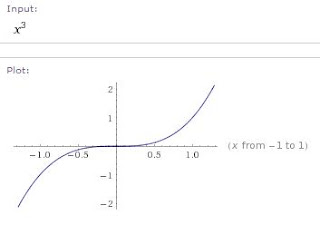Fermat’s Theorem: Supposse a function which it's defined on the interval (a,
b), in which we can find c.
If f(c) is an extreme value of f, and f is
differentiable at c, then f’(c) = 0.
A maximum or
minimum can occur where the derivative doesn't exist. And also, a point
where the derivative is zero may not be a maximum or minimum point. For
example, a function that increases, has a region with slope equals to 0
and continues increasing. It's not an extremum value.

.gif)